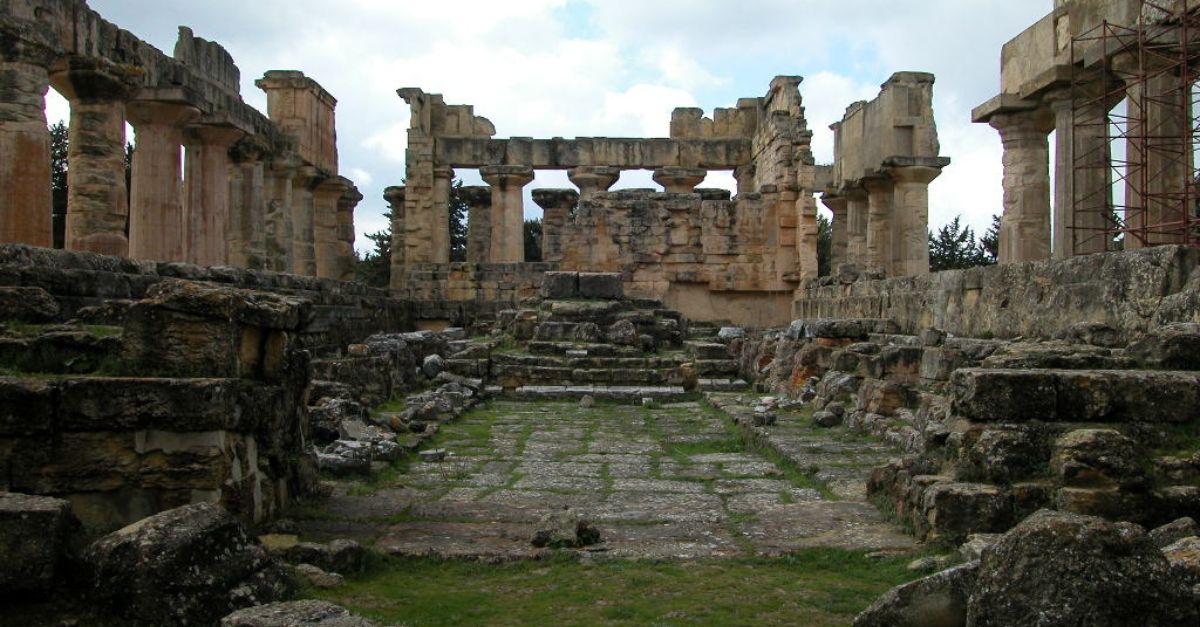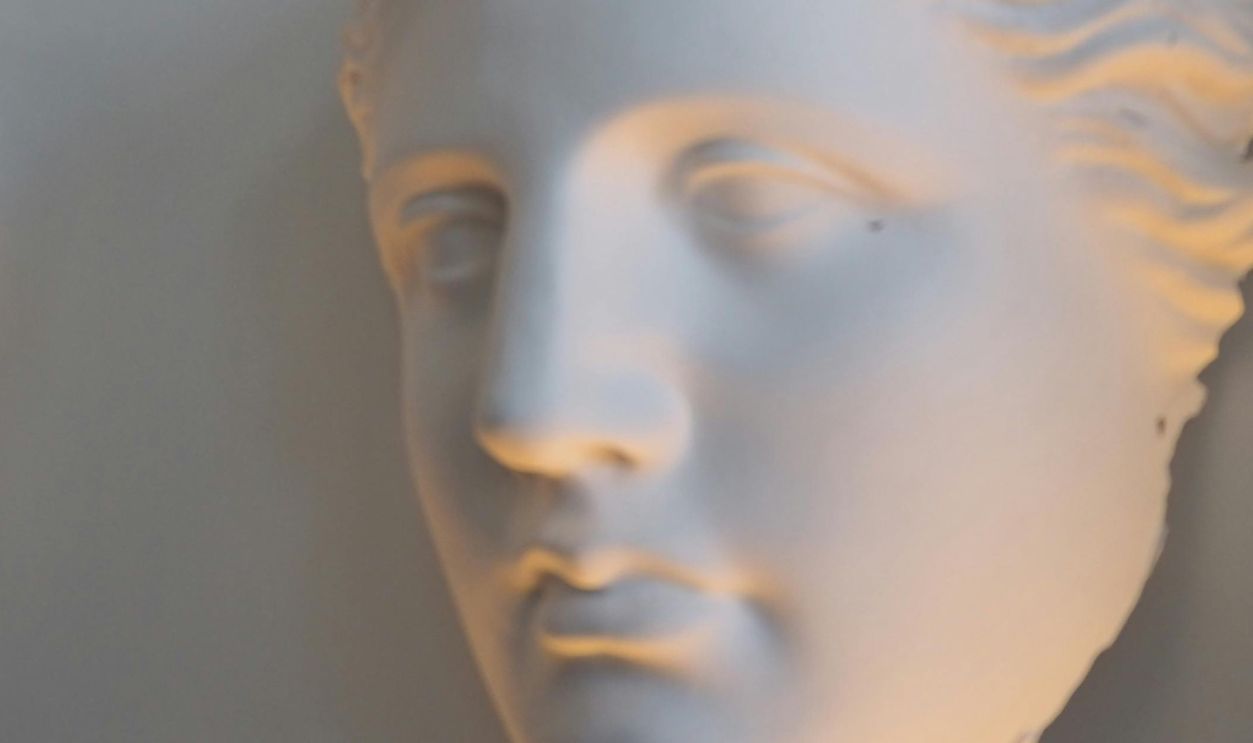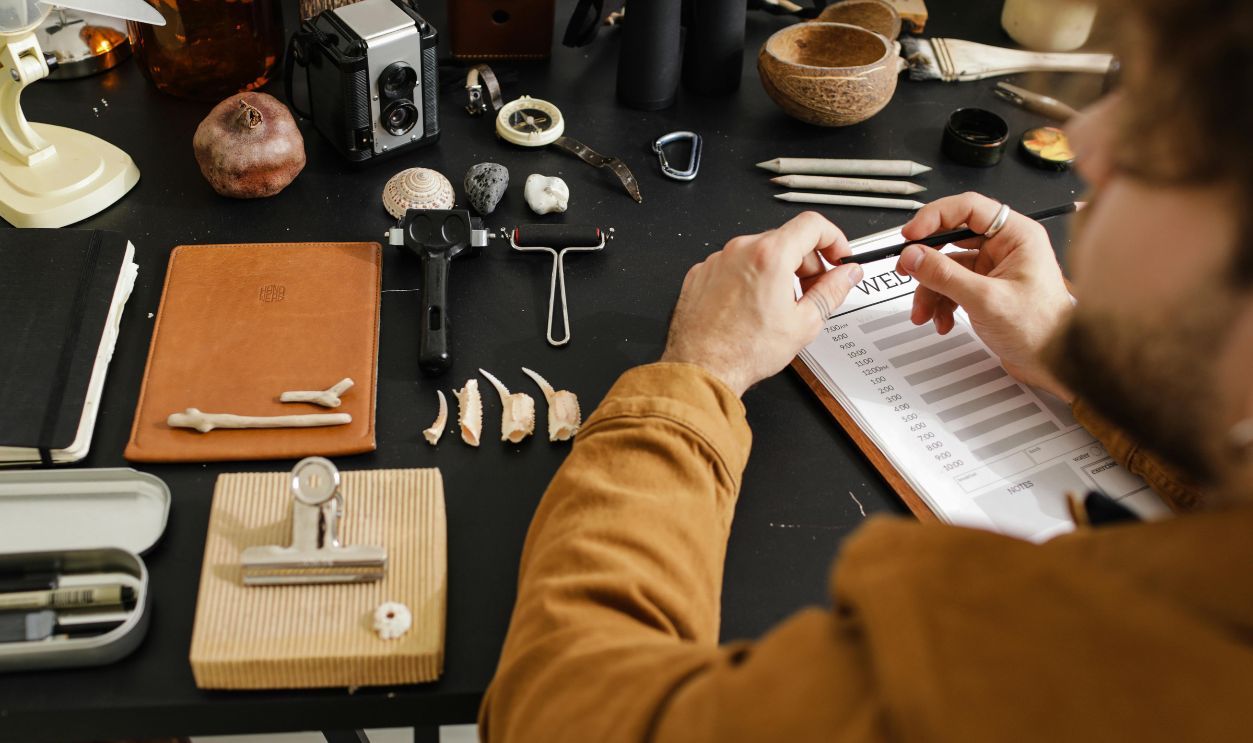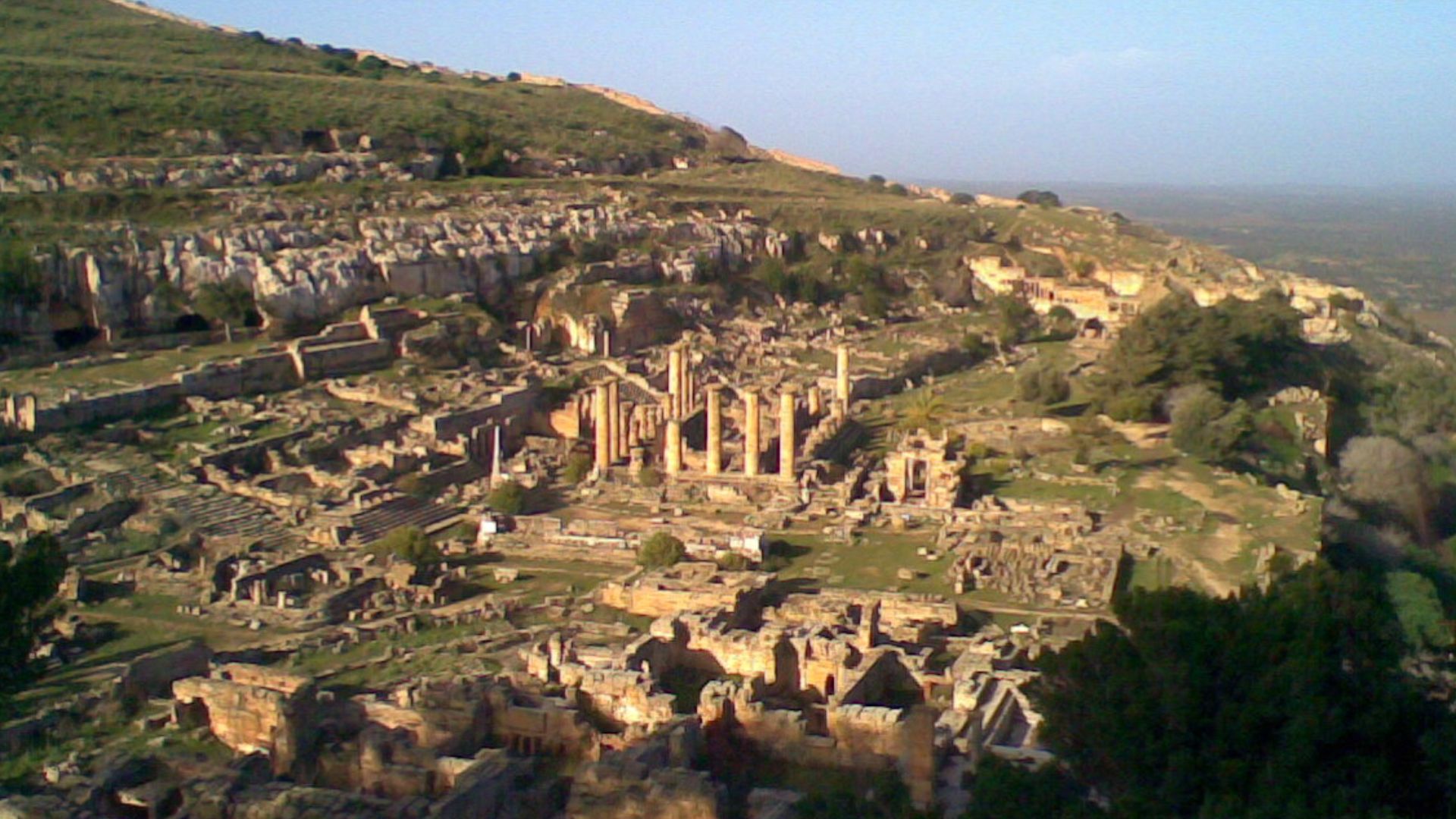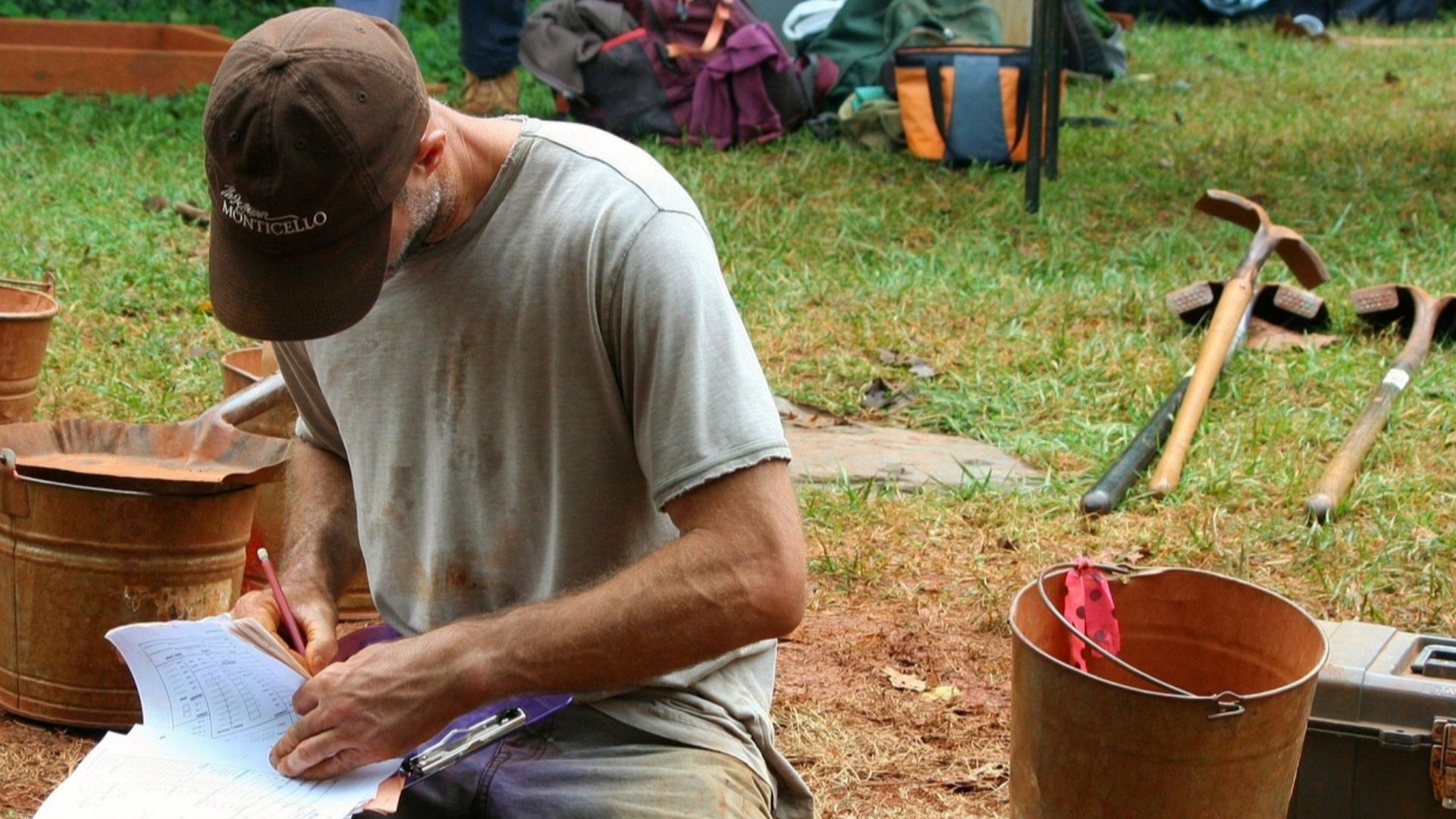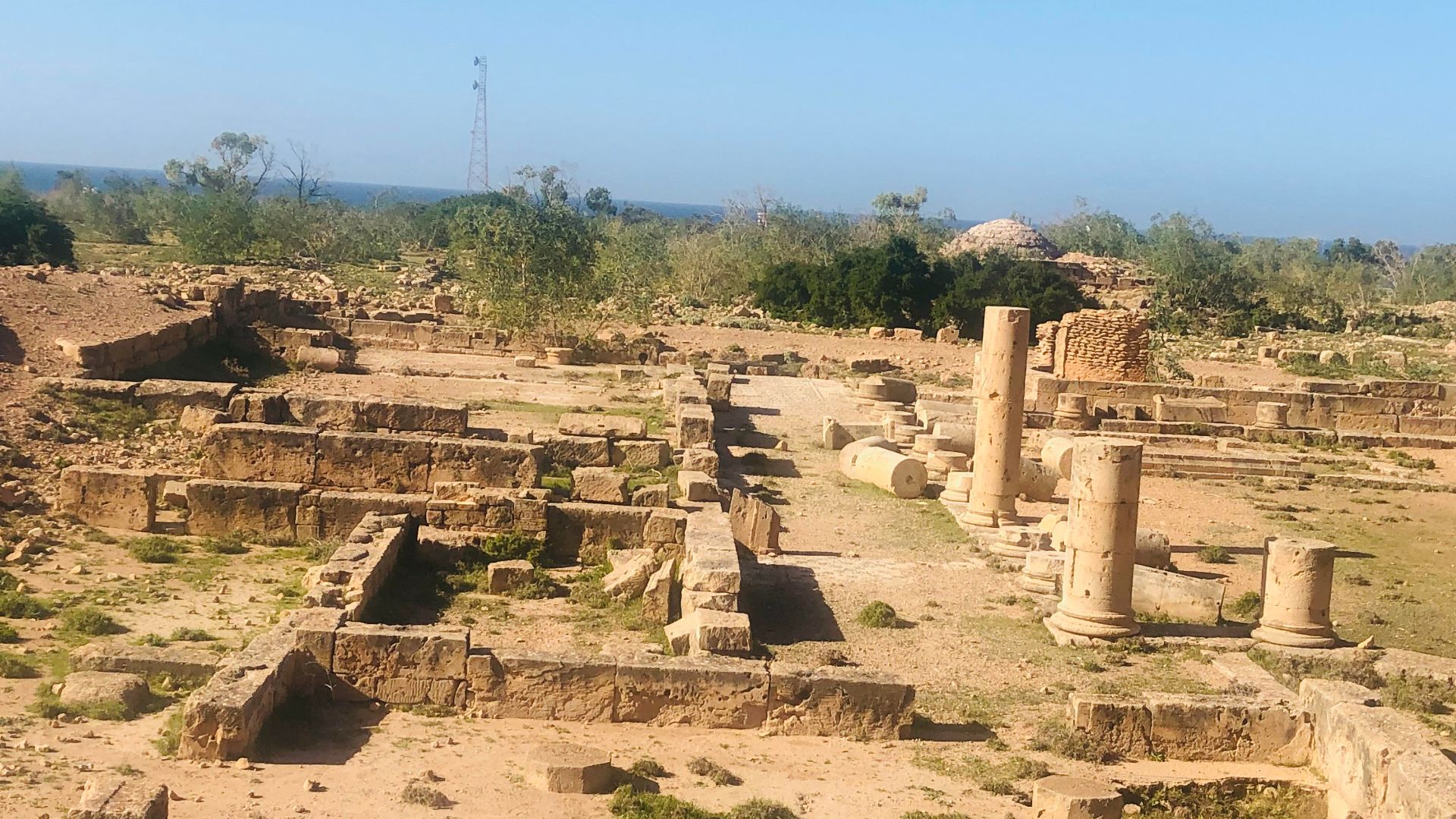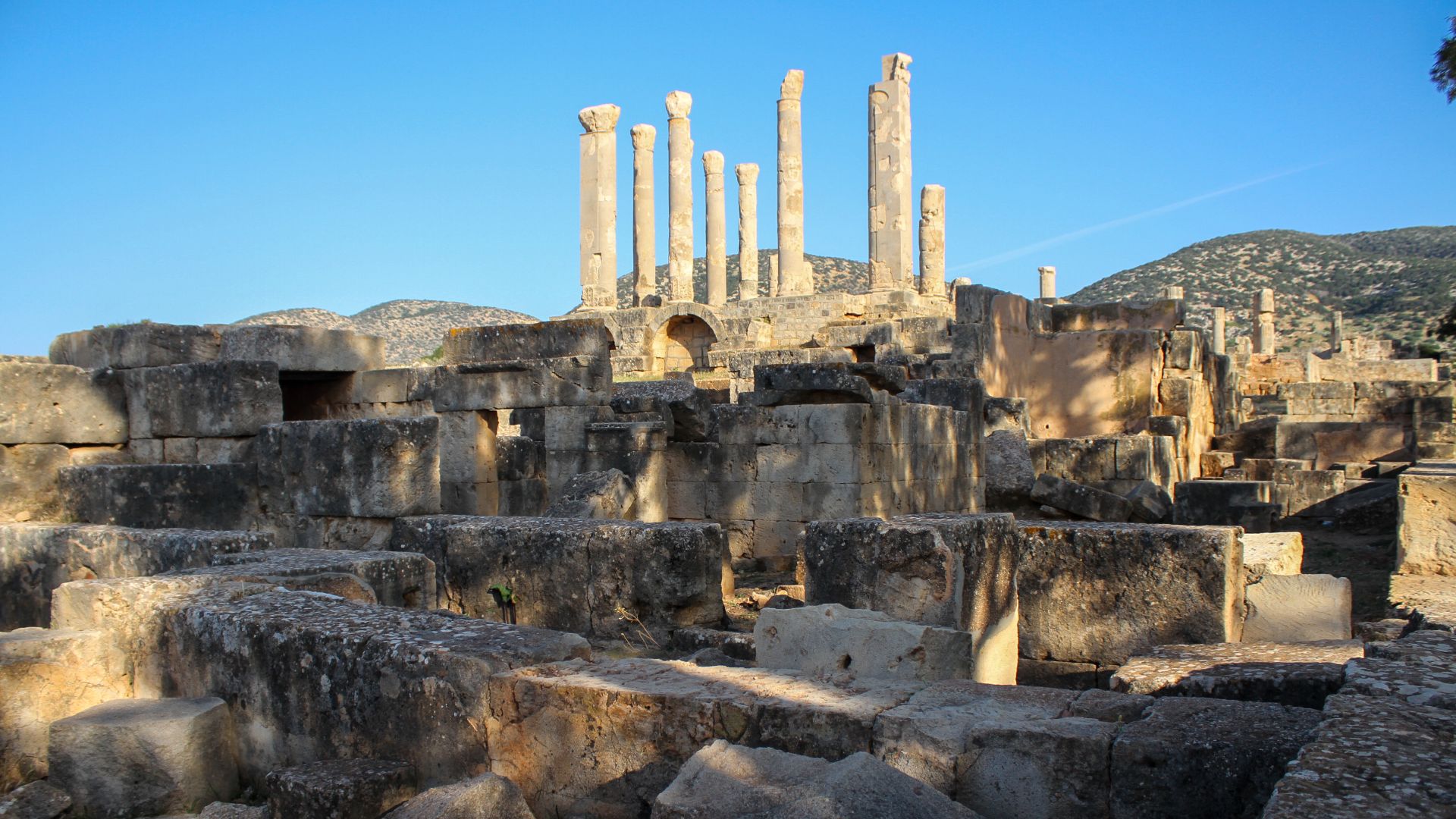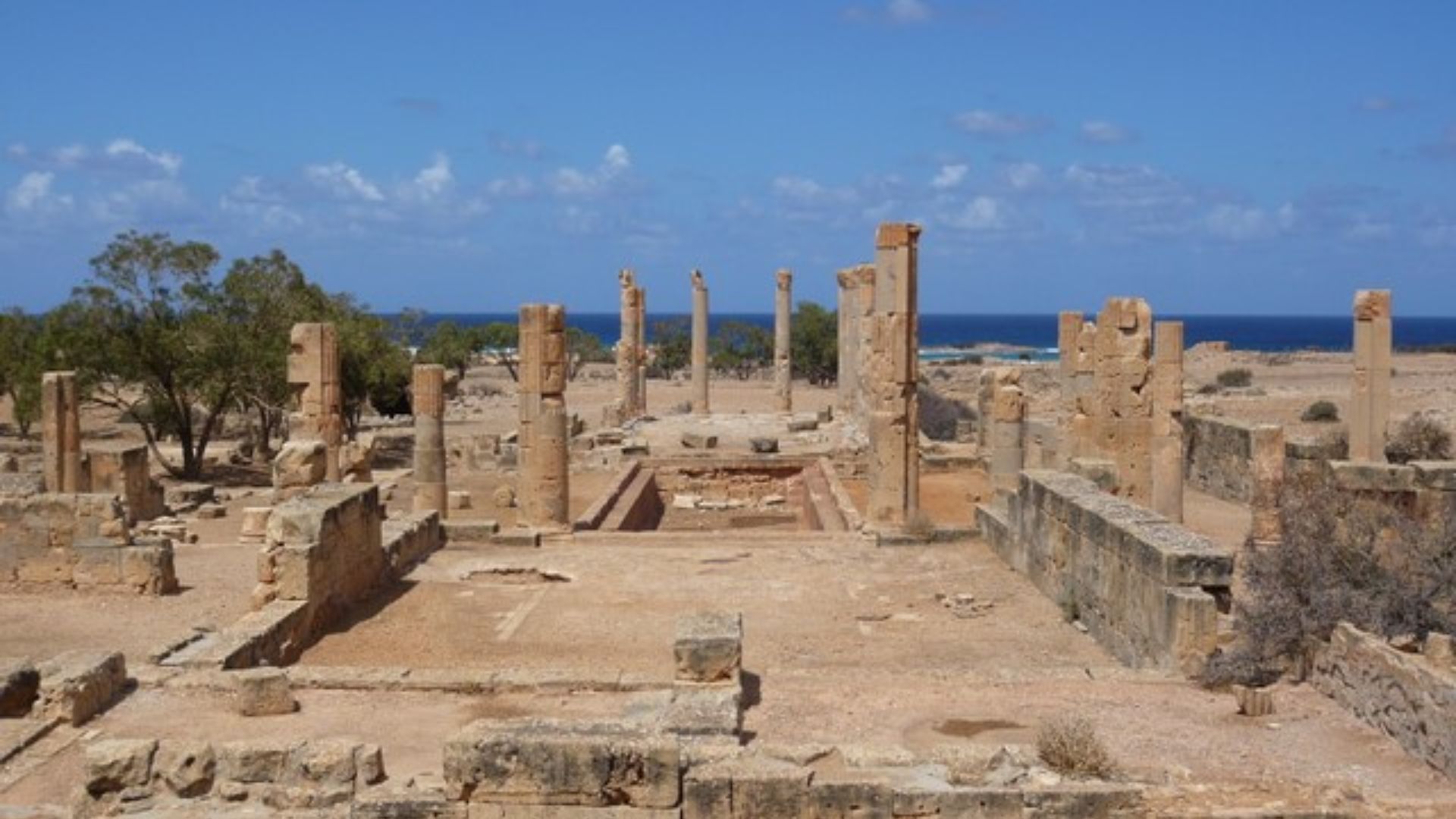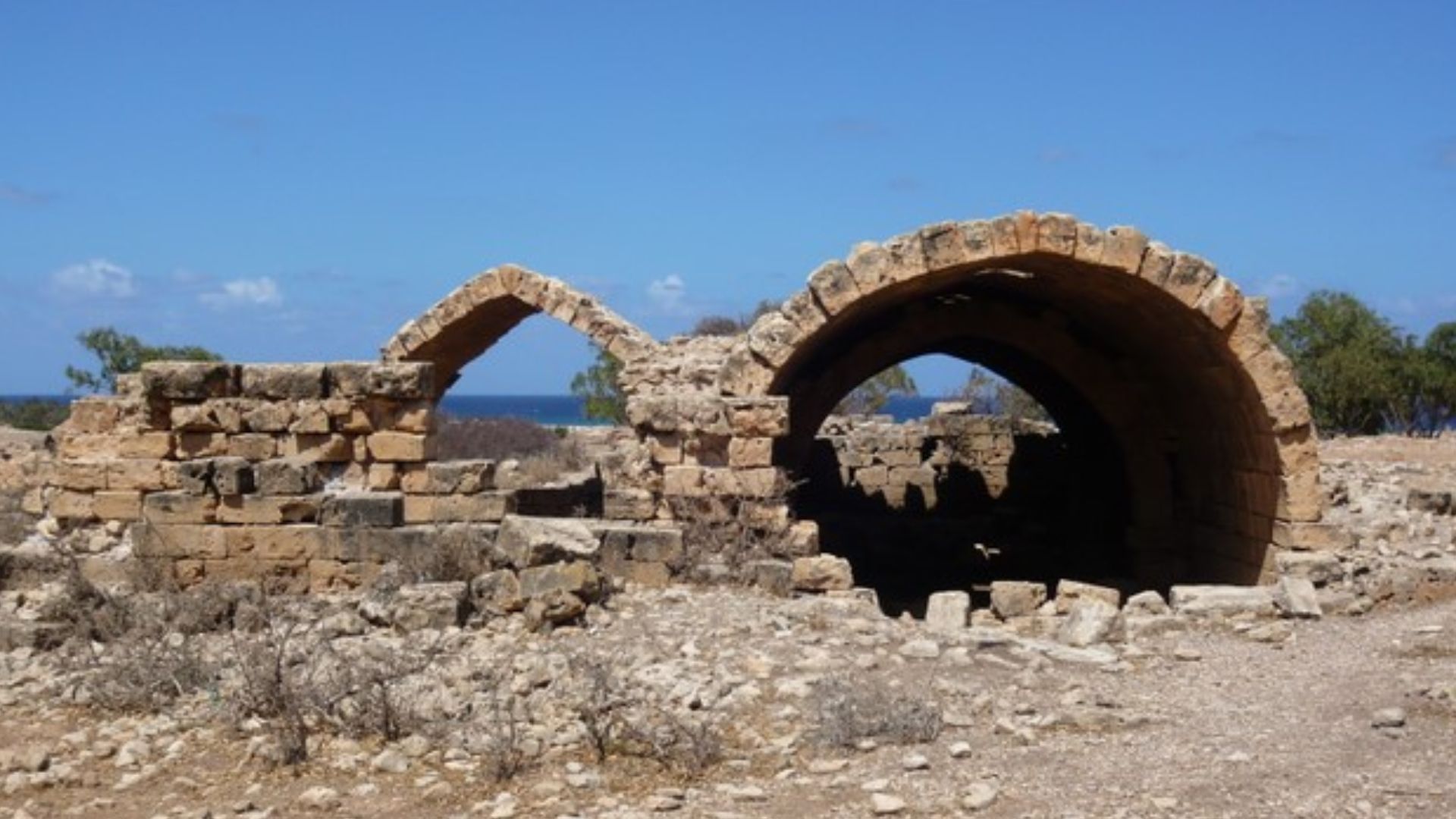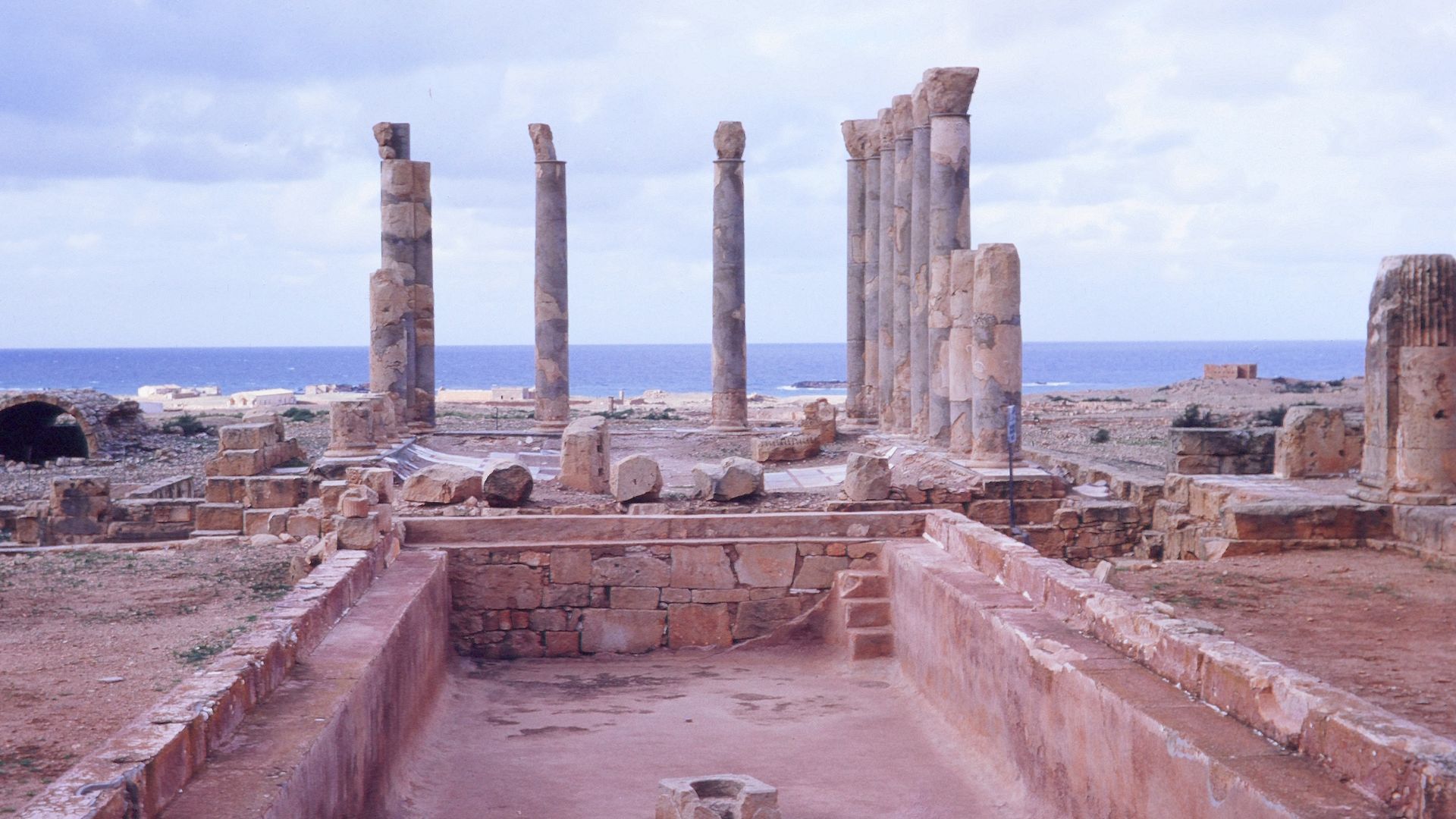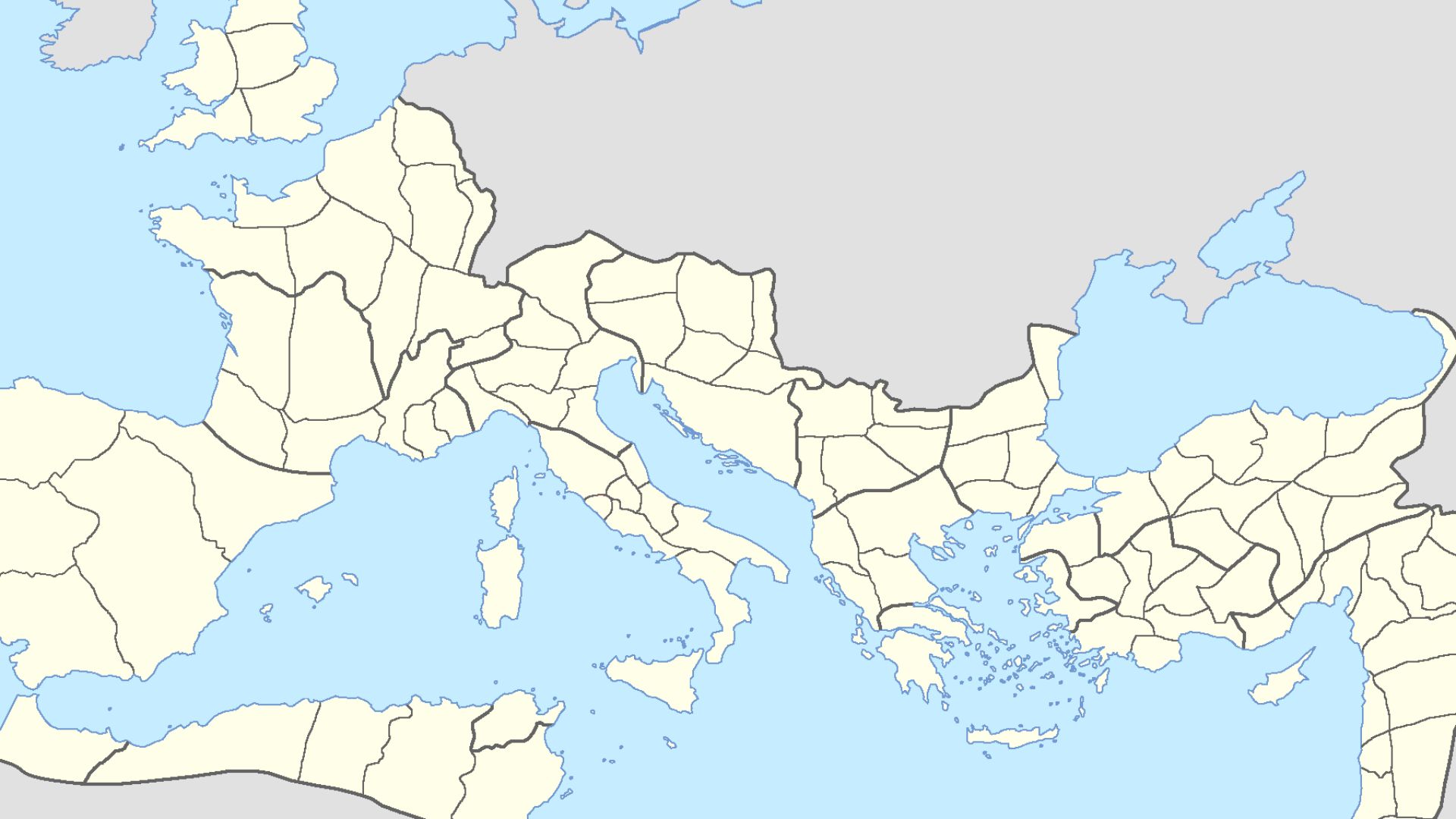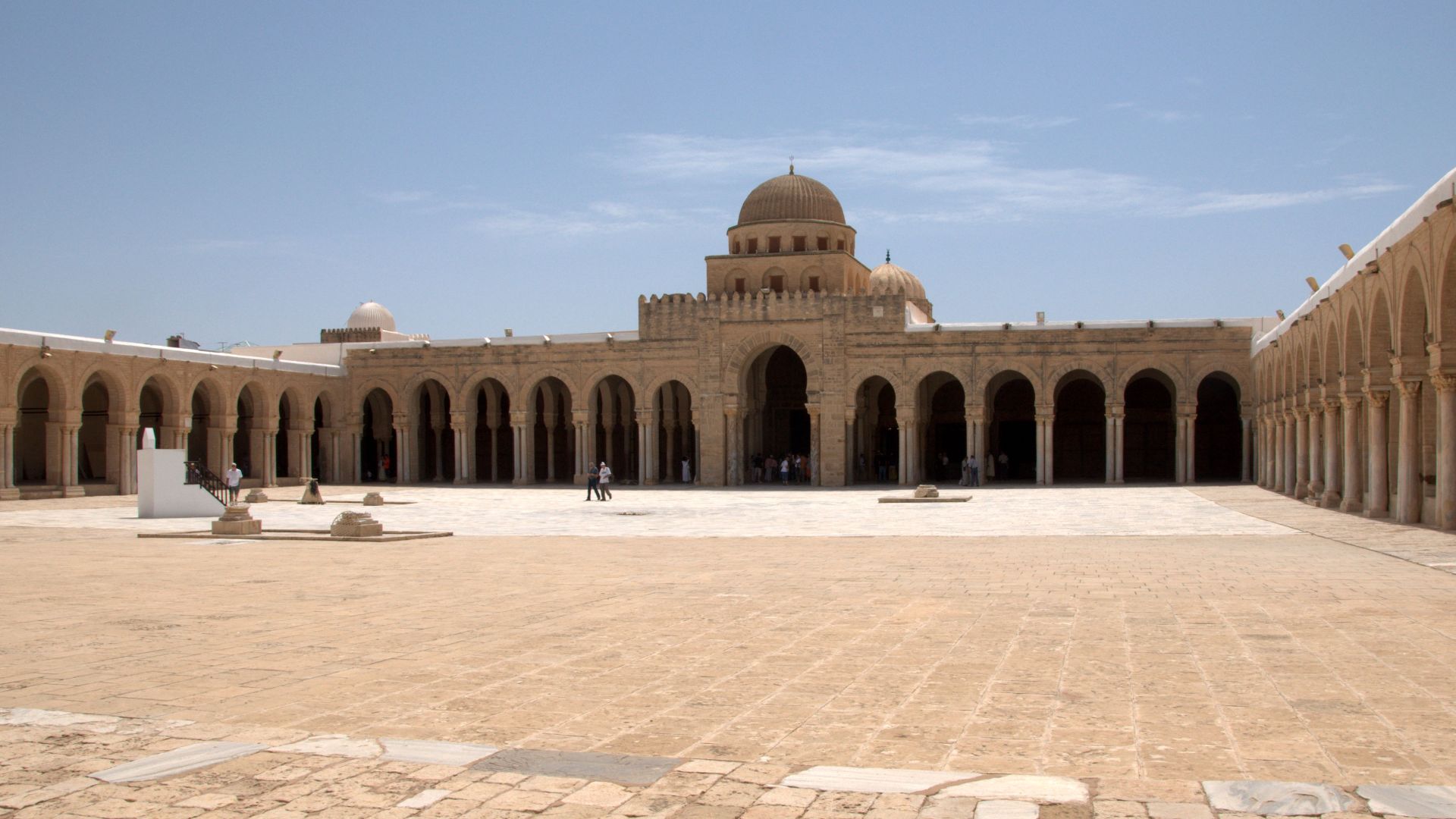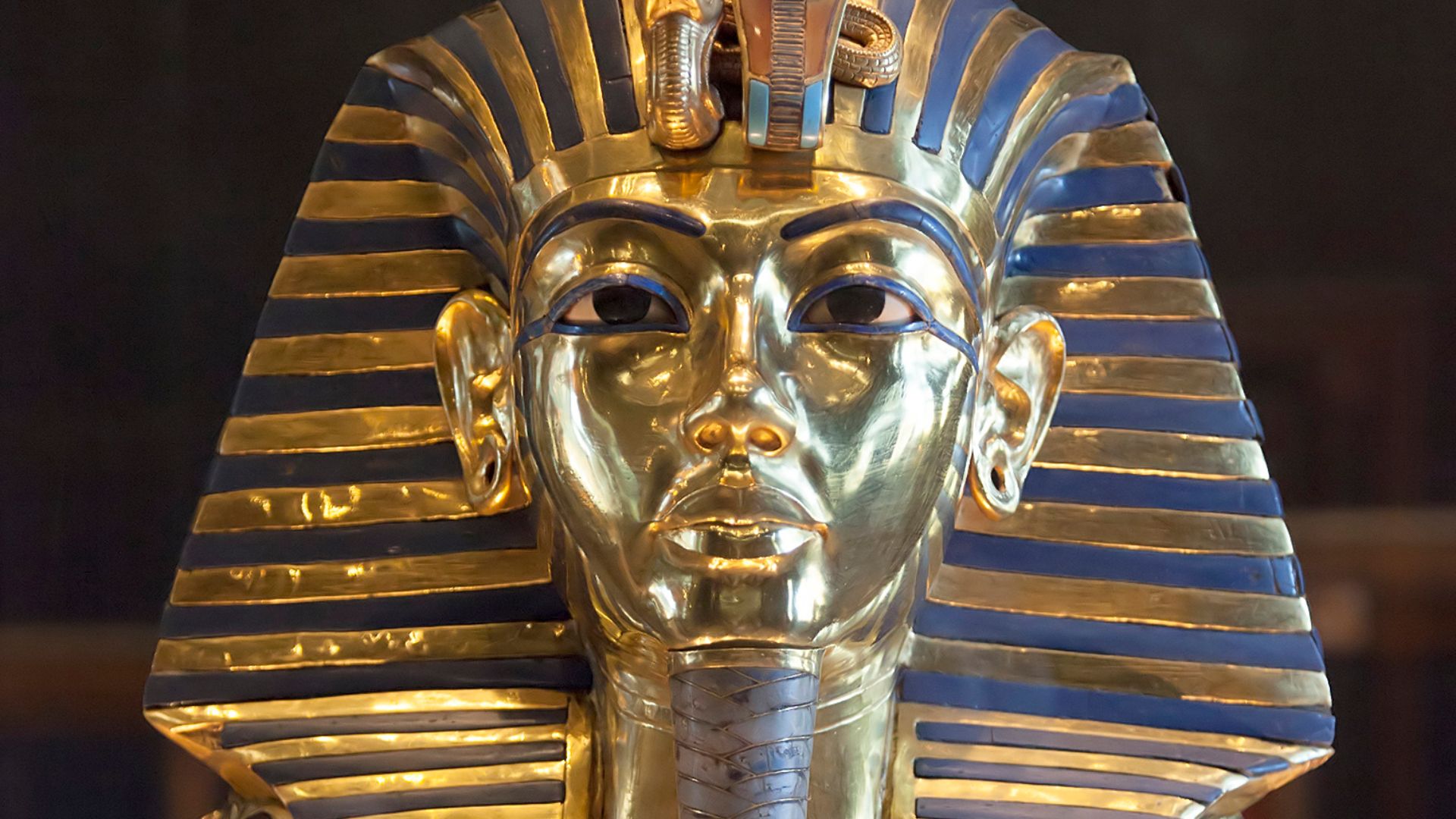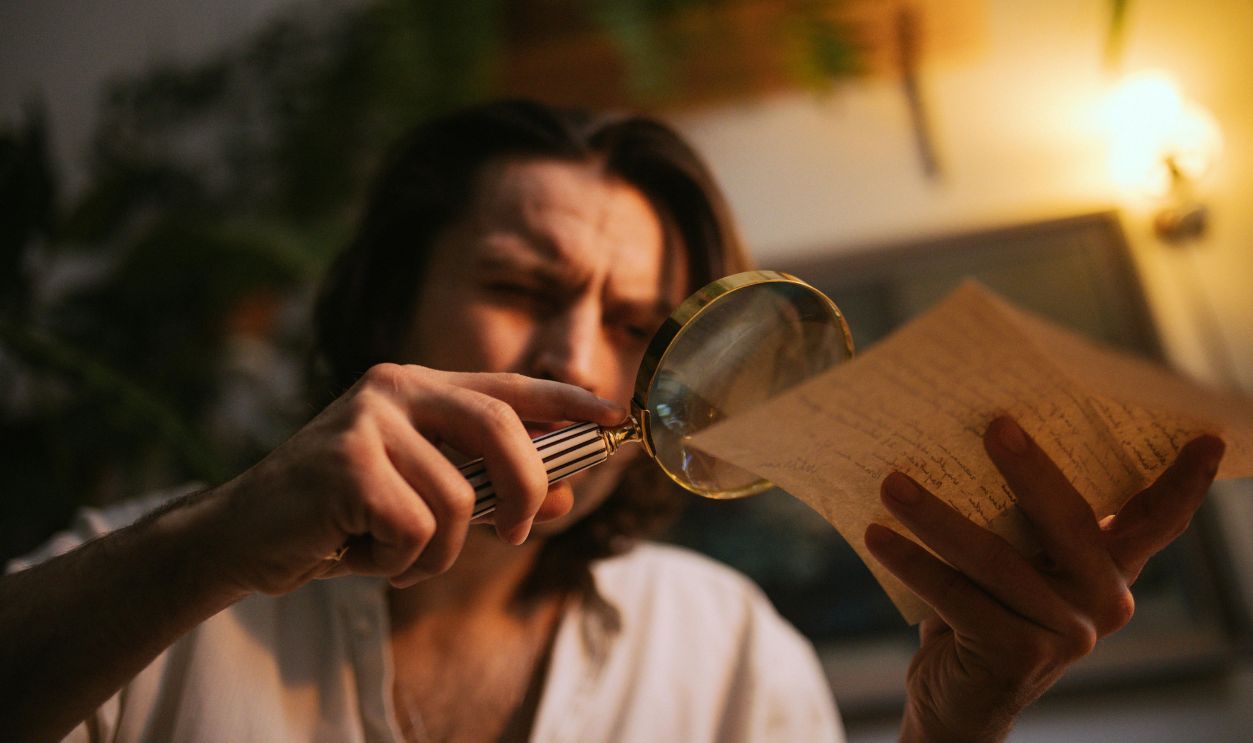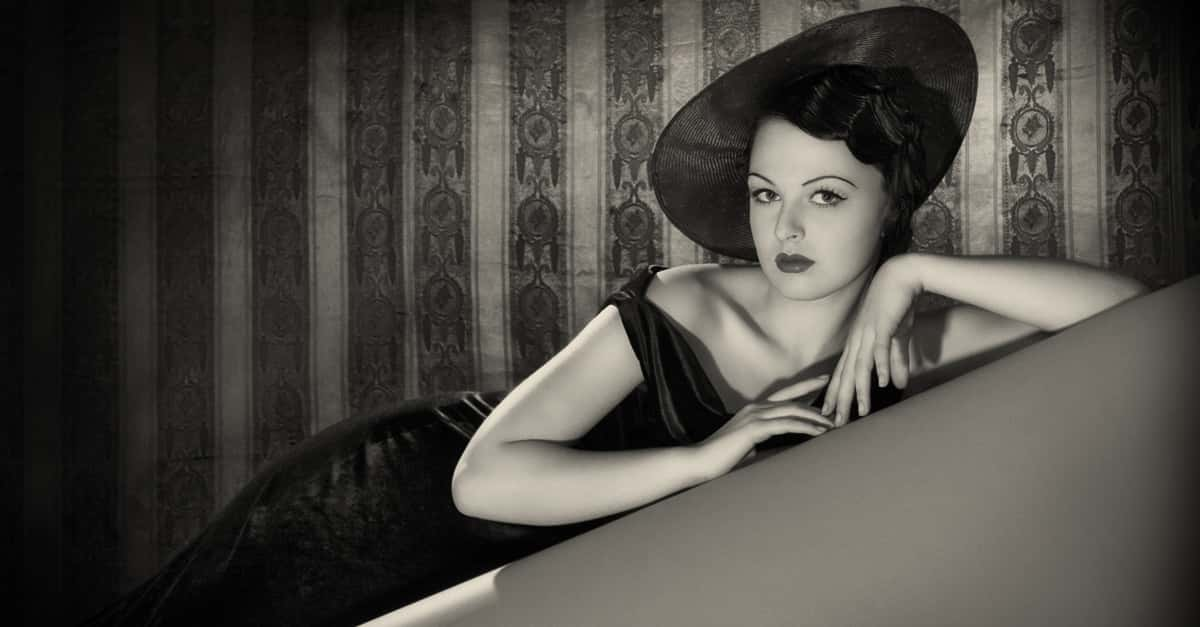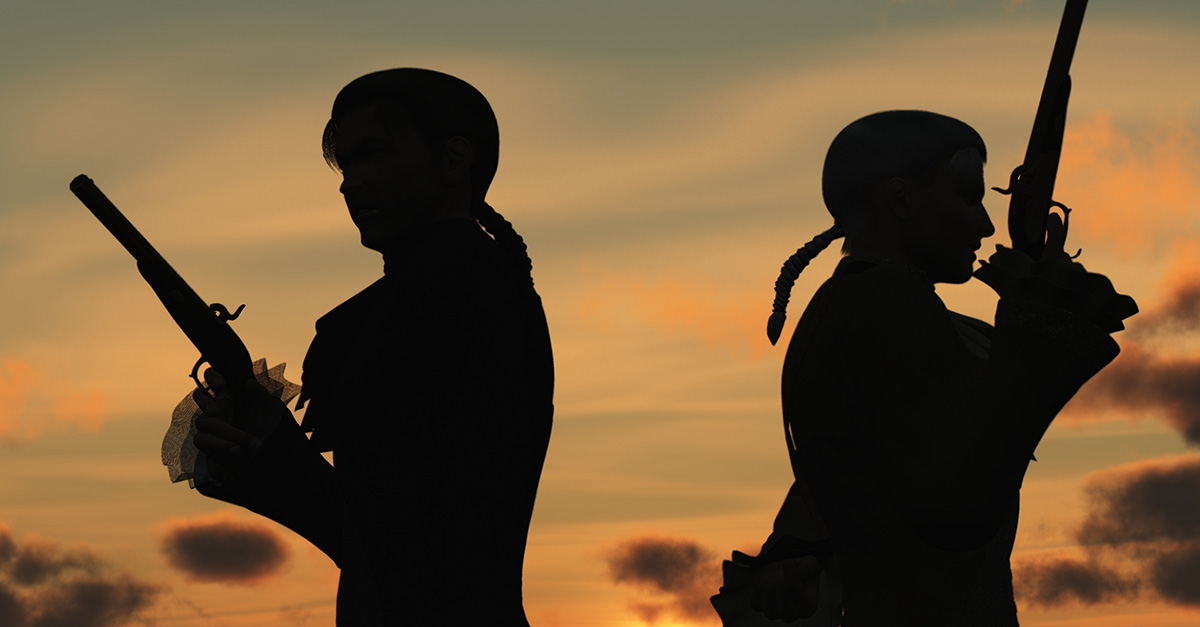When The Past Comes With A Face
History isn’t just found in books; it waits beneath the earth, buried for centuries. Every dig is a conversation with the past, which tells us about forgotten lives. What if an ancient mystery, long hidden, was finally ready to speak? Are you prepared to listen?

Return To Libya After 13 Years
In 2023, following 13 years of conflict, archaeologists came back to Libya with a milestone in the development of the Polish Archaeological Mission. At Ptolemais, they worked, discovering some impressive things that awakened a newfound interest in the rich and enthralling history of the country.
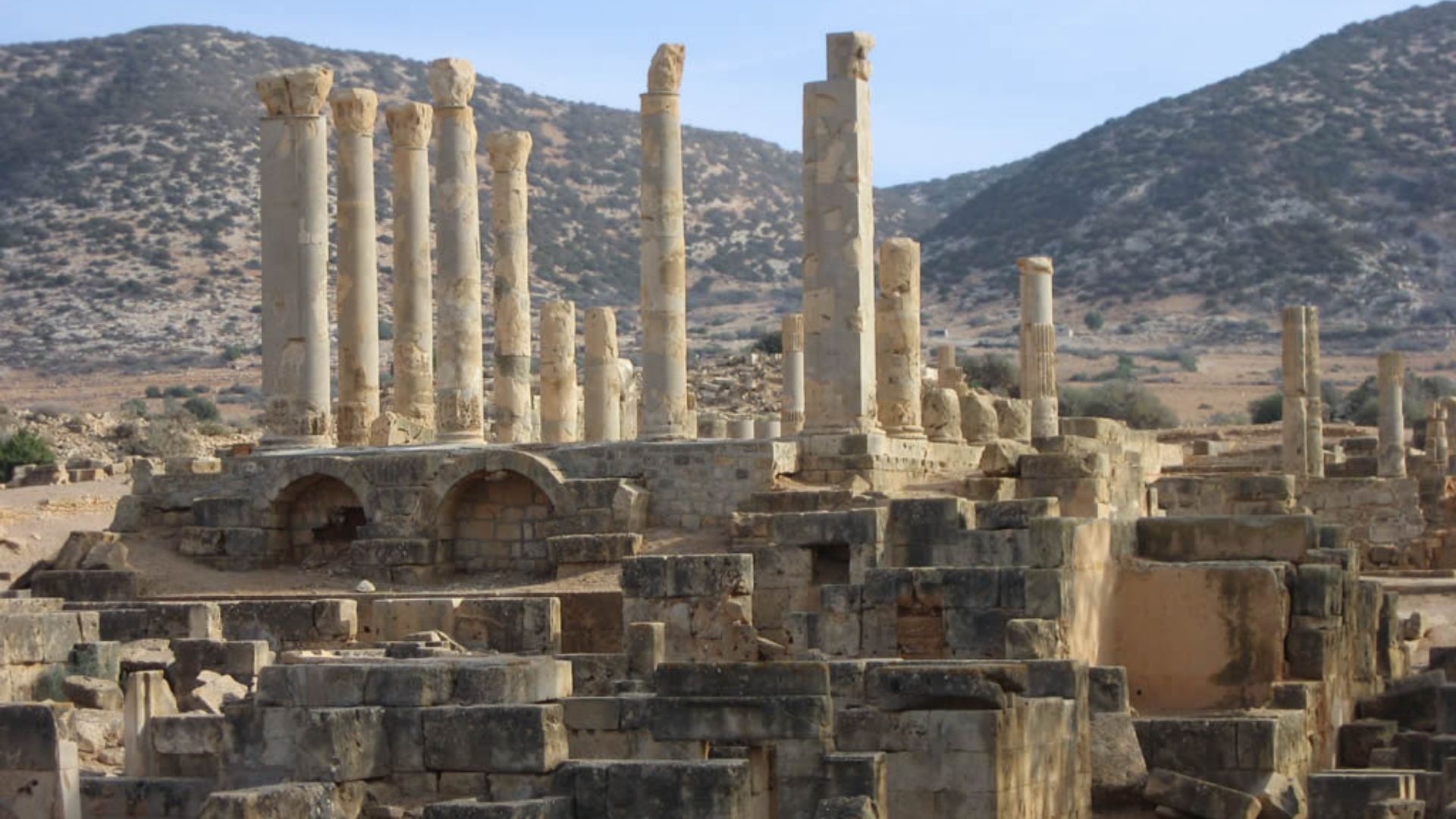 David Stanley from Nanaimo, Canada on Wikimedia
David Stanley from Nanaimo, Canada on Wikimedia
Look, A Face!
When excavating the ancient city of Ptolemais, archaeologists uncovered an unexpected find: A plastered human face on the wall of a water cistern in a Roman villa. Discovered in 2023, this creepy relic brought new mystery to their dig.
The Mold’s Mysterious Function
Archaeologists are unsure of the face's purpose. However, a few speculate it could be apotropaic to ward off evil, a workshop signature, or magical protection for the cistern. This intriguing find in Ptolemais, Libya, has sparked diverse theories among experts, adding mystery to the excavation.
It Is Made Of Hydraulic Plaster Mold
The face was made from hydraulic plaster, commonly used in construction. Its discovery in a cistern raises questions about its symbolic meaning or practical purpose in ancient Libyan culture, which highlights the blend of utility and symbolism in ancient building practices.
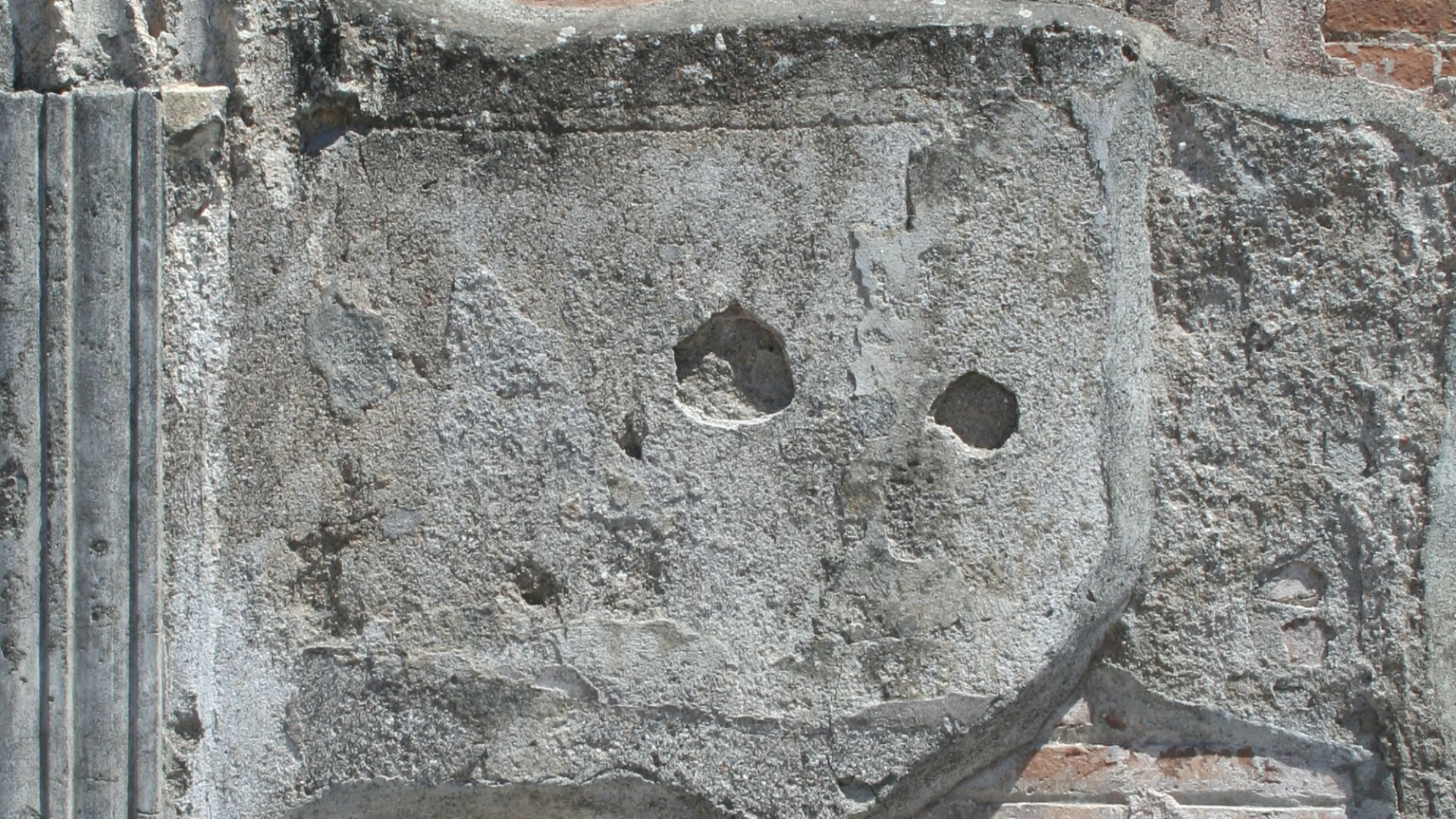 Heinz-Josef Lücking on Wikimedia
Heinz-Josef Lücking on Wikimedia
Potential Libyan Origin
There is speculation that the house in which the mold was discovered might have been owned by Libyans. The face resembles Libyan sanctuary carvings from Slonta, suggesting the potential local ancestry of the homeowner and pointing to cultural affinities.
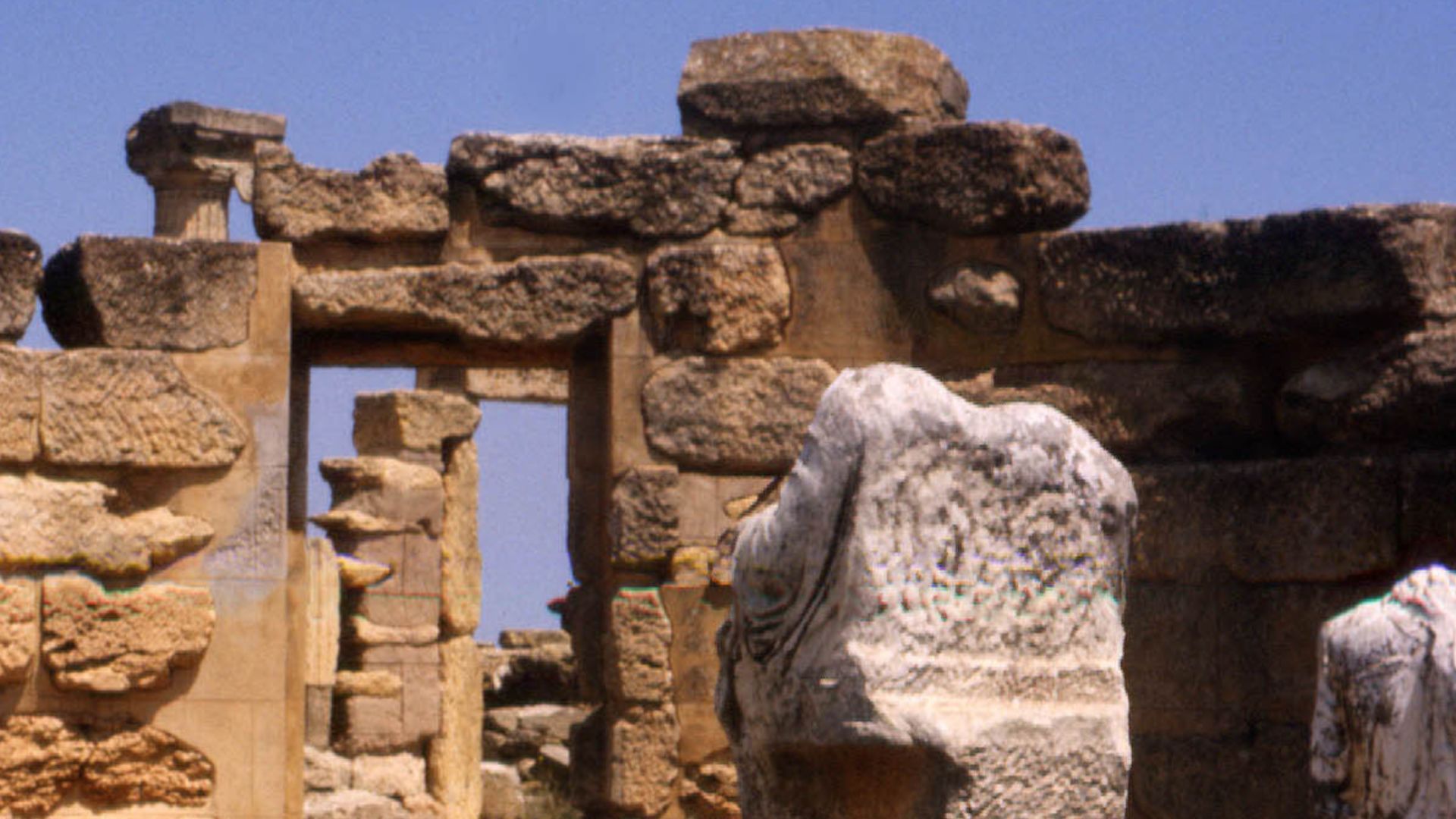 Koperczak (talk) 01:32, 29 March 2009 (UTC) on Wikimedia
Koperczak (talk) 01:32, 29 March 2009 (UTC) on Wikimedia
Influence Of Libyan Elites
Epigraphic evidence suggests that by the 1st century BCE, Libyan elites had gained citizenship in Greek cities like Cyrene. This supports the theory that the face mold found in Ptolemais reflects Libyan influence, highlighting cultural integration in the area.
Speculations On The Face’s Creator
It is not certain if the owner of the home or a tradesman created the mold. It is only possible for the archaeologists to guess who left the mysterious face and why it was put here.
House Of Leukaktios Identified
The plaster face was found in the “House of Leukaktios,” a grand villa named by archaeologists in 2001. The house dates back to the second or third century CE, revealing layers of history in Ptolemais.
The Layout Of The House Was Uncovered
During the latest excavations, archaeologists explored the house’s utility section, which reveals a courtyard, kitchen, stairs, and rooms decorated with intricate mosaics. These discoveries illustrate the villa’s grandeur and sophisticated design. They provide a glimpse into the luxurious lifestyle of ancient Ptolemais.
Where Was The Mold Found On The Villa’s Layout?
The villa where the mold was found belonged to a greater residential compound. It was designed with numerous functional areas, indicating the opulence and high social standing of its initial inhabitants. The fact that the mold was found there increases the significance of the villa both historically and archaeologically.
A Water Management System Existed Even Then
The villa had a smart way of managing water, with a pool (impluvium) that collected rainwater. It was then stored in underground tanks, one hiding the mysterious plaster face. This discovery highlights the ingenuity and advanced design of the ancient home.
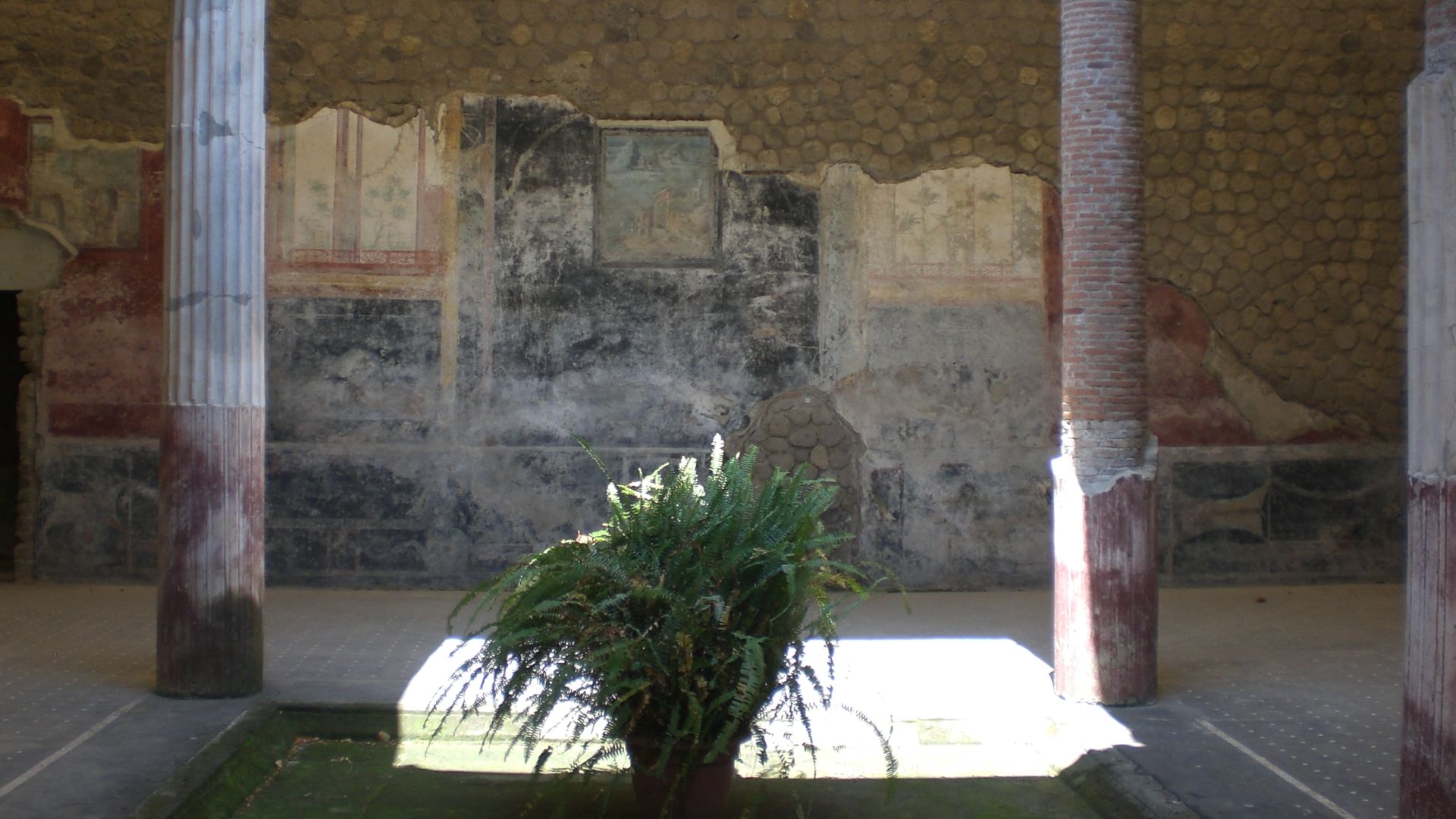 Luiclemens (talk) on Wikimedia
Luiclemens (talk) on Wikimedia
The Role Of Water In Daily Life
Water harvesting was essential in old Ptolemais. Rainwater-catchment cisterns utilized to retain water were part of the utilitarian system in a house. This shows that the ancient Libyans successfully handled water resources sustainably and showed their capability of being inventive and adaptable in an arid ecosystem.
There Were Earthquake Damage Signs
Signs of damage by an earthquake had been noticed at the villa, probably late in the third century. This could have weakened the foundation structure of the original building and can indicate challenges and limitations experienced during ancient constructions.
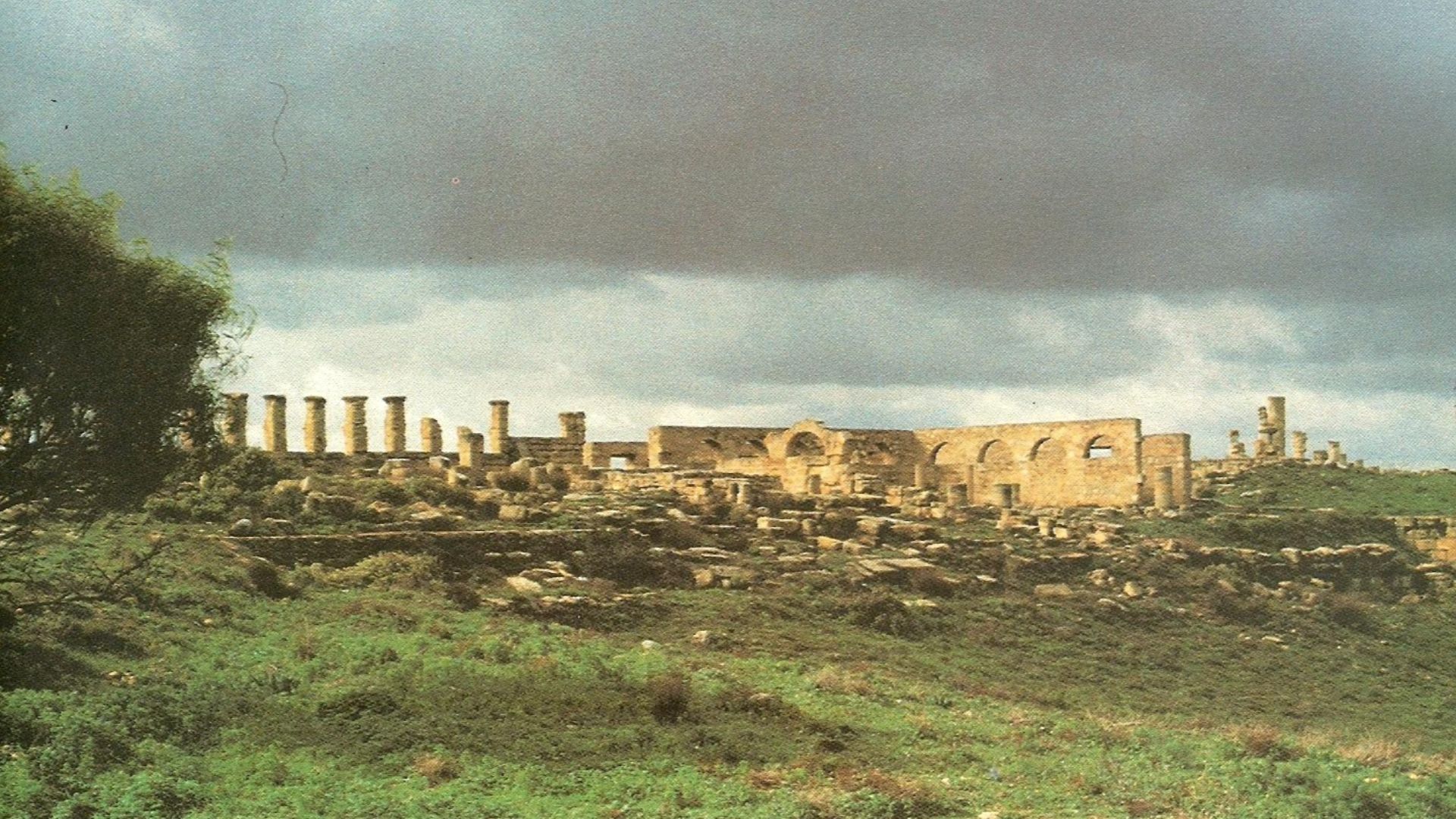 Munsha'at al Akhdar lil Alwan, Benghazi. on Wikimedia
Munsha'at al Akhdar lil Alwan, Benghazi. on Wikimedia
There Was Evidence Of Roman Period Rebuilding
In an interesting twist, it became apparent that the house had likely been rebuilt during the Roman period, before the Arab conquest in the 7th century CE. Archaeologists discovered stone containers placed by the door, which were probably used to pay taxes. This marks a shift in the house’s function.
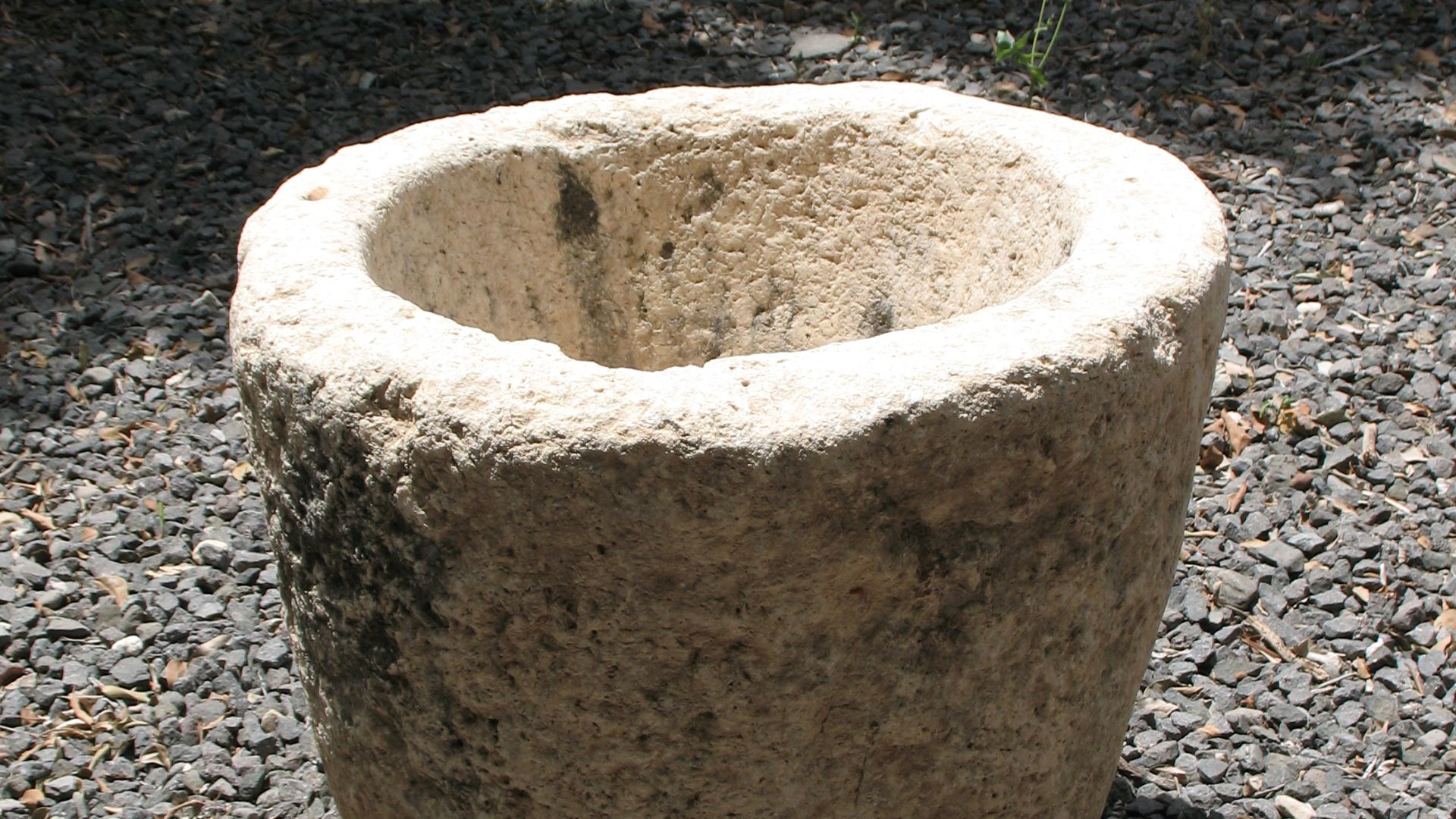 James Emery from Douglasville, United States on Wikimedia
James Emery from Douglasville, United States on Wikimedia
What’s The Historical Significance Of Ptolemais?
Ptolemais was a significant port city founded by the Egyptian Ptolemaic dynasty during the 4th or 3rd century BCE. It served as a major hub in linking Egyptian, Greek, and Roman cultures in North Africa. Also, it influenced regional trade as well as cultural exchange.
Ptolemais’s Role During The Roman Era
Ptolemais was made the capital of Libya Superior in the late Roman era, which shows its political significance. Its past history under Rome is paramount in comprehending the integration of the region into the Empire and the significance of the region in regional governance.
Ptolemais As A Cultural Center
Ptolemais thrived as a cultural crossroads. Its history, enriched by Egyptian, Greek, and Roman influences, reveals a complex society where multiple cultures and traditions merged and coexisted, creating a vibrant and diverse urban center in North Africa.
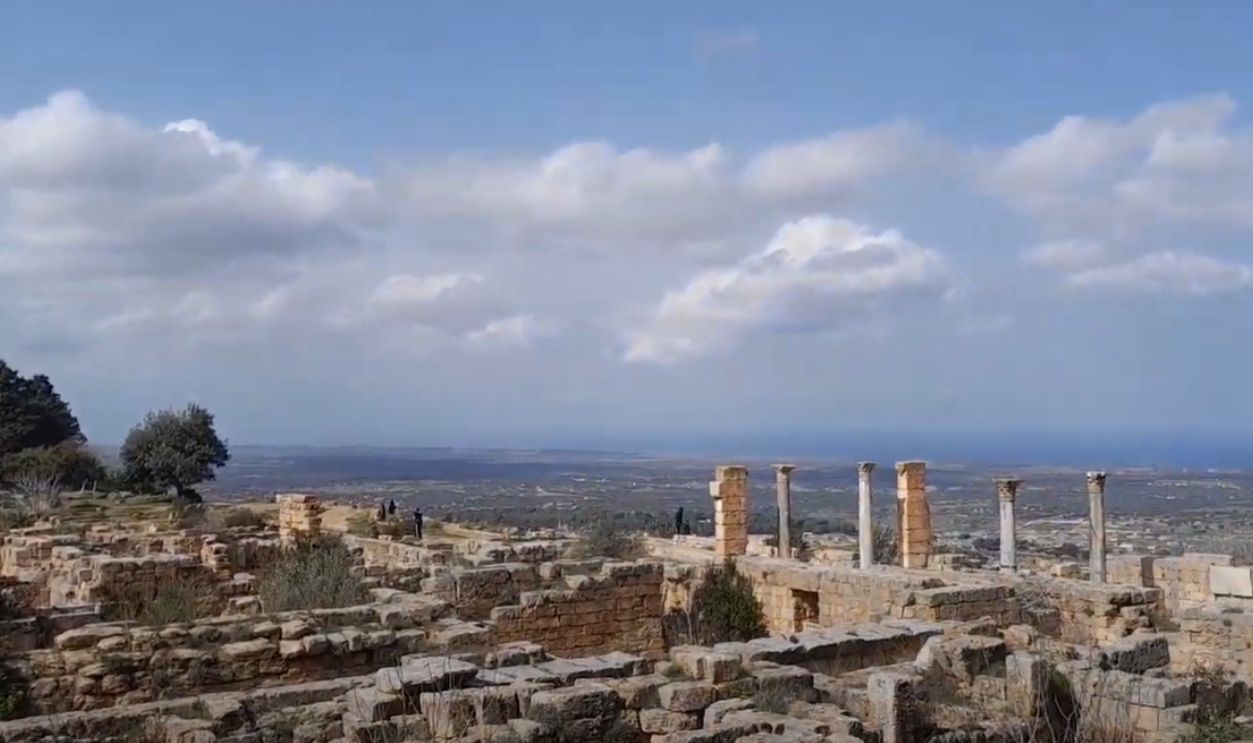 #ofw The Ruins of Ancient Rome Ptolemais near Benghazi in Eastern Libya! by OFW Travel VLOG
#ofw The Ruins of Ancient Rome Ptolemais near Benghazi in Eastern Libya! by OFW Travel VLOG
It Declined After The Arab Conquest
This capital survived until the Arab conquest in the 7th century CE, up until the city’s eventual fall marked the end of its influence as a significant urban center in North Africa. Its archaeological significance? That still endures.
The Legacy Of Ptolemais’s Inhabitants
The discoveries at the House of Leukaktios and other excavations in Ptolemais offer a glimpse into the daily life, culture, and architecture of its residents. These findings shed light on the enduring legacy and historical significance of this ancient civilization.
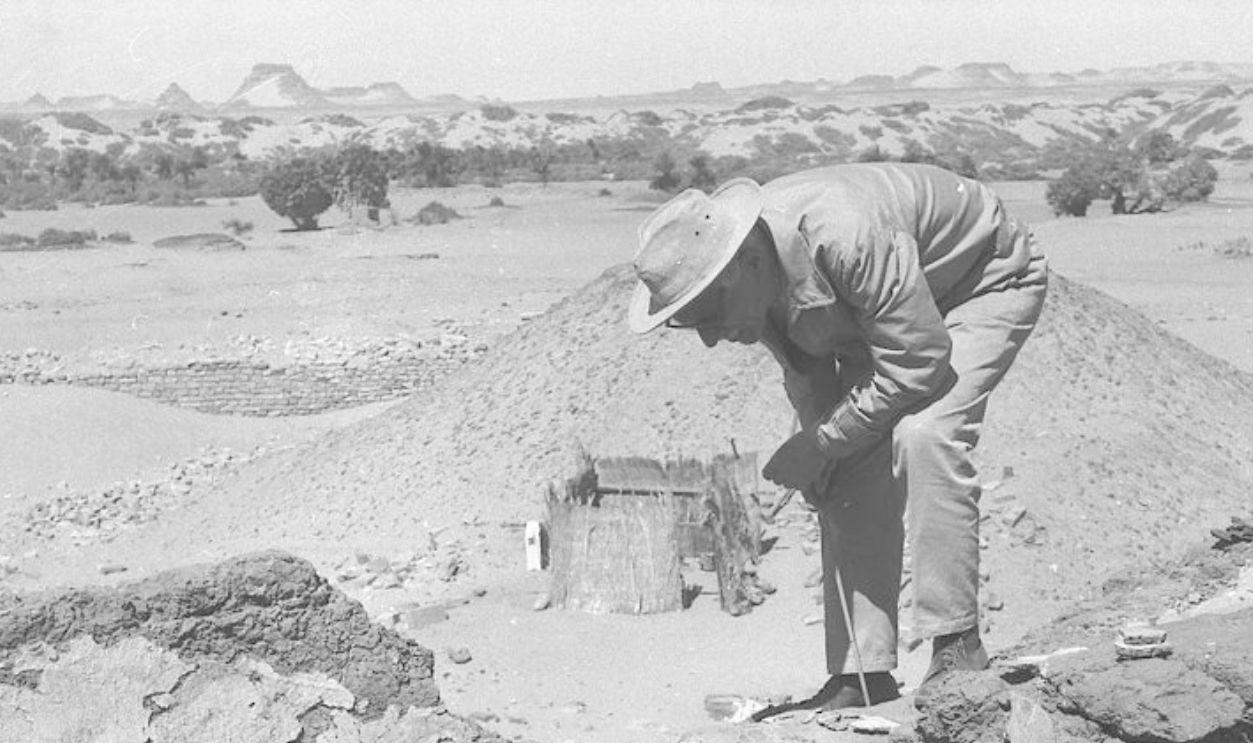 Tadeusz Biniewski, National Museum in Warsaw, CC BY-SA 3.0 PL, Wikimedia Commons
Tadeusz Biniewski, National Museum in Warsaw, CC BY-SA 3.0 PL, Wikimedia Commons
Does The Face Mold’s Serve Any Significance?
Um, to some, yes. The plaster mold is a significant artifact and presents unique information regarding ancient Libyans's artistic, social, and religious activities. Additionally, it is an important key for further investigation and reveals secrets about this fascinating ancient culture.
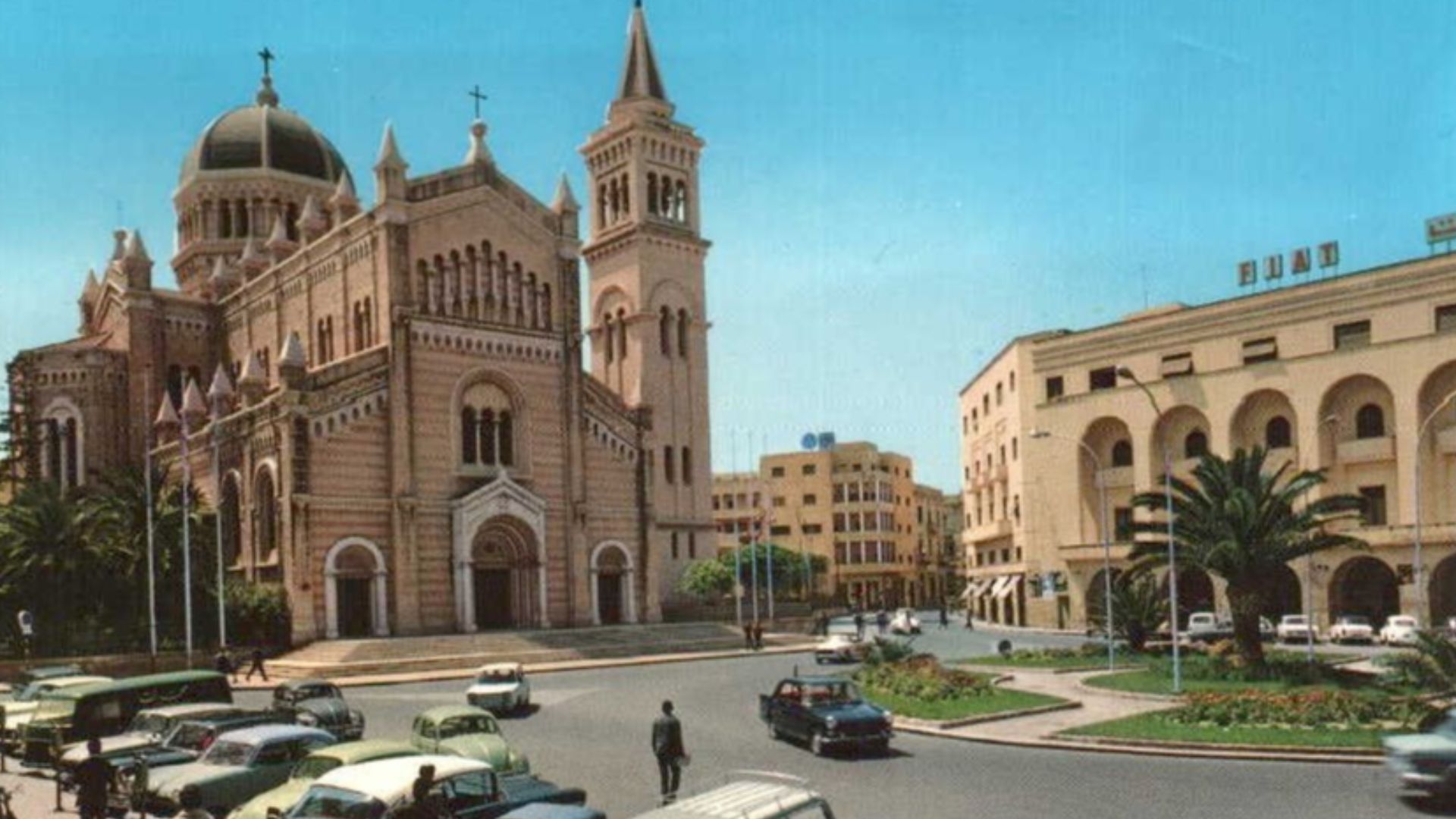 Unknown authorUnknown author on Wikimedia
Unknown authorUnknown author on Wikimedia
Archaeological Contributions To History
The Polish Archaeological Mission has significantly contributed to understanding the history of Ptolemais. Their work uncovers ancient artifacts and structures, which reveal more about life in ancient North Africa and provide valuable insights into the region's cultural and historical development.
 Archeologia.chodlik on Wikimedia
Archeologia.chodlik on Wikimedia
Signs Of Cultural Diversity
The design of the face mold can also mirror cultural diversity in Ptolemais. There were Egyptian, Greek, as well as Libyan influences. Thus, the villa owner may have come from a race that blended different cultural traditions, which are reflected through the rich, diverse heritage of the city.
Continuing Excavations In Ptolemais
The ongoing excavations in Ptolemais are uncovering new layers of history. Each season brings new findings that deepen the understanding of the city’s past and offer more clues about its inhabitants and their customs, enriching our knowledge of this ancient urban center.
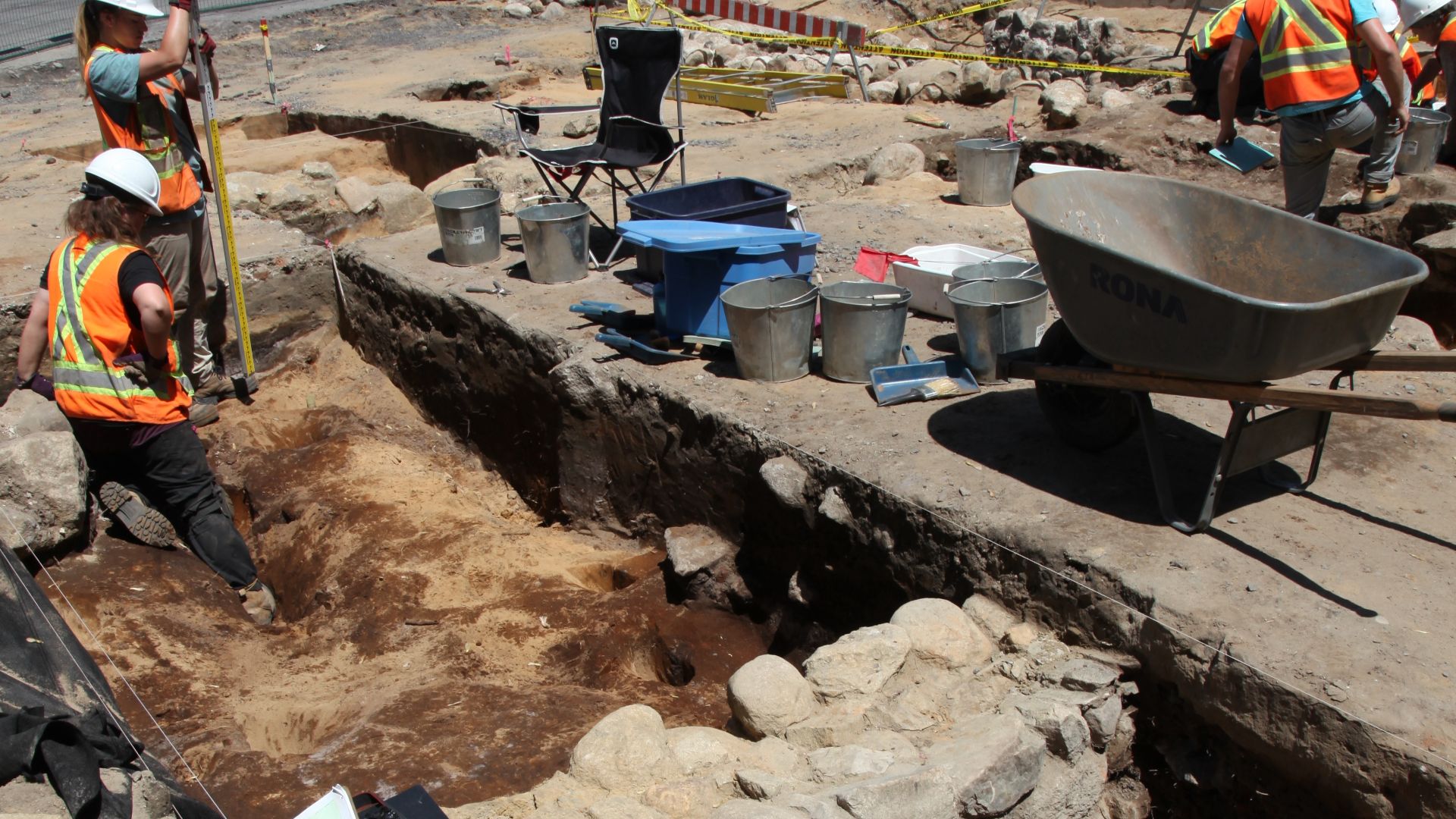 Marc-Lautenbacher on Wikimedia
Marc-Lautenbacher on Wikimedia
Continuing Excavations In Ptolemais (Cont.)
However, this intriguing mold remains a distinctive artifact, offering a glimpse into life in Ptolemais almost two thousand years ago. The mystery persists: Who created this plaster face, and for what purpose? At present, archaeologists remain without definitive answers.

